Sinclair Vintage Visible Gas Pump: Fully Restored Fry “Mae West” – FGP5011
The Fry “Mae West” Gas Pump Is Perhaps The Most Collector Coveted Of All Visible Gas Pumps Due To Its Iconic Body Shape, Simply A Must Have For Any Serious Petroliana Aficionado, This One Is Restored Fully To Working, Ready To Pump Gas “Or Beer” Condition; This Fry Model 117 Is An Original, Investment Quality Pump For Serious Collectors, And To Top It All Off, Has Been Restored With A Period Correct, Sinclair HC Gasoline Paint Scheme And Original Milk Glass Globe
Fully Restored Inside And Out Visible Gas Pump To Fine Art World Class Museum Standards Preserving A Hundred Years Of Americas Iconic Industrial Revolution History, A Signed 101 Point World Class Fine Art Restoration H.J. Nick., And Featuring His Brass Tag Certification Which Is Recognized By Museums, Insurers, And Experienced Collectors Worldwide

Description
Sinclair HC, Fry Model 117 “Mae West" With 101 Point Restoration To Original 1920's Visible Gas Pump Specifications
On Consignment In Perfect Condition, Must Sell Due To Family Circumstances
Sinclair Vintage Visible Gas Pump: Fry Mae West Model Fully Restored
This is an original Sinclair vintage visible gas pump. It is a Fry "Mae West", ten gallon visible hand pump from the 1920's. At ArtFactory.com we have completely restored this old gas pump to the original condition, as it would have been delivered from the manufacture, 100-years-ago. Like all of our vintage gas pump restorations, it has been restored both inside and out to working museum quality standards. The means even parts that cannot be seen when the pump is fully assembled have been cleaned and polished.
This is a fully original Fry Model 117 vintage visible gas pump from the 1920's (see Before and After photos above), with original, period correct signage from Sinclair Oil. This "Mae West" gas pump features an original, clear glass, 10 gallon tank. It has been branded with Sinclair HC signage that is original from the period, and features an original milk glass gas pump globe that is historically correct to the period. The body of the pump is galvanized metal and is green with white accent colors and a gold area with the word "FRY" cut out on the front of the body. The glass gas tank includes original measuring sticks, and a price placard. This old gas pump has been completely restored to museum quality. All parts are historically correct and original, and are in full working order. Our restorations are the best in the business due to our decades of experience, commitment to originality, and attention to detail. We are 'The Original American Restoration Company".
Sinclair Vintage Visible Gas Pump Specifications
- Fully Restored Fry "Mae West" Vintage Visible Gas Pump With 10 Gallon Tank Featuring All Original Parts And Restored To The Same Condition That A New Pump Would Have Been Delivered Directly From The Manufacture 100-Years-Ago
- Manufacture: Guaranteed Liquid Measure Company
- Gas Company Paint Scheme And Signage: Sinclair
- Make/Model: Fry 117 Visible Gas Pump
- Tank Capacity: 10 Gallons
- Era: 1920's
- Color: Green/Red/White/Gold
- Height: 119" (with globe)
- Base Diameter: 24 Inches
- Place Of Manufacture: Rochester, Pennsylvania, U.S.A.
- Condition: Fully Restored To Working, Museum Quality Collector Condition In 2013 Including All Parts Both Inside And Out, And Signed By H.J. Nick As World Class Fine Art
- H.J. Nick Brass Tag Signature Certification
- Notable Features: Original Sinclair H.C. Milk Glass Gas Globe Light
ArtFactory.com & H.J. Nick Brass Tag Certification Details
The H.J. Nick Brass Tag Certification ensures each piece to be the genuine article. Backed by our over a century of experience, with our word is our bond reputation and guaranteeing or your money back “forever". The H.J. Nick Brass Tag Certification makes this item one of the highest appreciating, collectible investments that you can make. These items can be insured at stated value, usually on your home owners policy, for little added premium. Thus, making this a safer investment than even those insured by the FDIC, is much more fun to own, and puts you in control instead of the bank.
Watch Our Man Cave Tour Video
Sinclair Vintage Visible Gas Pump Additional Details
This Sinclair vintage visible gas pump has been completely restored to museum quality. All parts are historically correct and original, and are in full working order. Contact ArtFactory.com today at 1-800-292-0008 to get pricing on this Sinclair vintage visible gas pump, or get started on your own vintage gas pump restoration today. We can restore vintage gas pumps to any station or theme of your choice. Not only that, but we are a one stop shop for your petroliana themed man cave, and have one of the largest selections of authentic, collectible vintage porcelain signs for sale anywhere. Don't settle for low quality reproductions that will never have any long term value, when you can own "the genuine article".
History Of The H-C Sinclair Sign And Sinclair Neon Signs
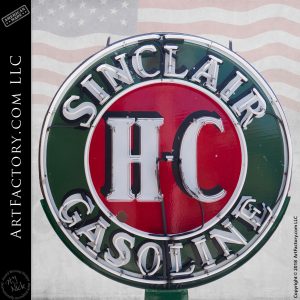 The H-C Sinclair gas sign is closely associated with Sinclair Oil Corporation, an American petroleum company founded by Harry F. Sinclair in 1916. The Sinclair Oil company is known for its distinctive green dinosaur mascot, as well as its use of neon signs to advertise its products. The company used various types of signage to promote its brand and attract customers. In the 1920’s and 1930’s, Sinclair employed a variety of designs for its gas station signs, including neon signs, porcelain signs, and illuminated signs.
The H-C Sinclair gas sign is closely associated with Sinclair Oil Corporation, an American petroleum company founded by Harry F. Sinclair in 1916. The Sinclair Oil company is known for its distinctive green dinosaur mascot, as well as its use of neon signs to advertise its products. The company used various types of signage to promote its brand and attract customers. In the 1920’s and 1930’s, Sinclair employed a variety of designs for its gas station signs, including neon signs, porcelain signs, and illuminated signs.
The H-C Sinclair gas sign refers specifically to a type of sign that featured the initials "H.C." alongside the Sinclair logo. The H-C Sinclair Gasoline sign can be traced back to 1926, with the introduction of Sinclair’s high octane gasoline. H-C, the industry's original high-octane premium gasoline for motorcars was a 72-octane auto fuel, developed at its Houston refinery, and was better than anything on the market in that era. For reference, the Lindbergh's flight to Paris in 1927 was on 73-octane gasoline. H-C stood for "Houston Concentrate, some advertisers referred to is as "High Compression." The design of the H-C Sinclair gas sign typically featured a rectangular or oval shape with the green Sinclair dinosaur logo in the center. These signs were often seen in the 1930’s and 1940’s and were used to promote Sinclair gas stations that sold the high octane fuel.

Sinclair Service Station (Ridgeland, South Carolina). National Register of Historic Places listings in Jasper County, South Carolina.
Sinclair's first neon sign was created in the 1920’s, and it quickly became a popular way to advertise the company's gas stations and other products. The signs were made by hand, with glass tubes bent into specific shapes and filled with neon gas. (This same process is used by ArtFactory.com on not only Sinclair items, but every vintage neon sign that we restore features hand blown and bent glass tubes, filled with neon gas, using the same processes that were used in the early-Twentieth Century). By the 1950’s, Sinclair had become one of the largest neon sign manufacturers in the world.
The company's signs were found at gas stations and other locations across the United States, and they became an iconic part of American culture. Sinclair's neon signs were designed to be eye-catching and memorable, with bold colors and distinctive shapes that made them stand out from other signs. The company's most famous sign was the "Sinclair Dino," which featured a green dinosaur standing on its hind legs and holding a gas pump. This sign was first introduced in 1930, and it quickly became a beloved symbol of the company.
Despite the rise of LED and digital signs in recent years, Sinclair continues to use neon signs as part of its advertising strategy. The company's neon signs are still made by hand, using the same techniques that were used in the early days of neon sign production. Today, Sinclair's neon signs are considered collectors' items, and they can be found in museums, and private collections around the world. The fact that these signs continue to be in made, more than a century after the first Sinclair neon sign was produced, is a testament to the company's long history and to the enduring appeal of neon signs as a form of advertising.
History Of The Sinclair Dino Logo

New York State Route 17 Sinclair Station. Doug Kerr from Upstate New York, CC BY-SA 2.0, via Wikimedia Commons
Sinclair Oil is an American petroleum company that was founded in 1916 in Wyoming. The Sinclair dinosaur logo is one of the most recognizable logos in American history. The logo was first introduced in the 1930’s by the Sinclair Oil Corporation, a major oil company based in the United States. The Sinclair dinosaur logo has undergone several changes over the years, but it remains a beloved symbol of the company's history and legacy.
The story of the Sinclair dinosaur logo begins in 1916, when the Sinclair Oil Corporation was founded. At the time, the company did not have a logo or a recognizable brand identity. However, that all changed in the 1930’s, when the company hired an artist named Dino De Laurentiis to create a new logo. De Laurentiis was an Italian artist who had recently immigrated to the United States. He was known for his ability to create memorable characters and logos, and he was the perfect person to design a new logo for Sinclair. De Laurentiis began working on the logo, and after several drafts, he came up with the now-famous image of a green Brontosaurus (later corrected as Apatosaurus) with the company name written in bold, red letters. The Sinclair dinosaur logo was an instant success. It was unlike anything else in the oil industry, and it quickly became synonymous with the Sinclair brand. The logo was used in all of the company's advertising, and it helped to establish Sinclair as one of the leading oil companies in the United States.
Over the years, the Sinclair dinosaur logo underwent several changes. In the 1950’s, the company updated the logo to make it more modern and streamlined. The Brontosaurus was given a more realistic appearance, and the font used for the company name was updated as well. In the 1960’s, the Sinclair dinosaur logo was updated again, this time to reflect the company's interest in space exploration. The Brontosaurus was given a rocket on its back, and the company name was updated with a more futuristic font.
Despite these changes, the Sinclair dinosaur logo remained a beloved symbol of the company's history and legacy. It continued to be used in the company's advertising and marketing campaigns, and it was even featured in movies and television shows. In the 1970s, however, the Sinclair dinosaur logo began to disappear from the company's advertising. The oil crisis of the 1970s had a major impact on the oil industry, and many companies, including Sinclair, were forced to cut back on their advertising budgets. As a result, the Sinclair dinosaur logo was no longer as visible as it had been in previous years. Despite this decline in visibility, the Sinclair dinosaur logo remained a beloved symbol of the company's history and legacy. It continued to be used on the company's products, and it was still recognized by people all over the world.
About The Black Dino Logo
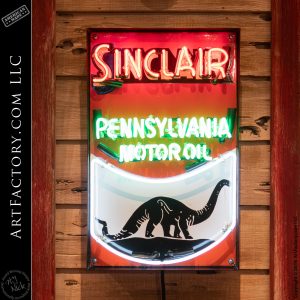 While the specific phrase "Black Dinosaur" may not have been officially coined by Sinclair Oil, it has become a popular term used to describe the distinctive dinosaur character associated with Sinclair's 100 million year advertising campaign. The concept of the "Black Dinosaur" for Sinclair's 100 million year advertising campaign was introduced in the mid-20th century and became an iconic symbol for Sinclair Oil Corporation. The campaign aimed to highlight the company's connection to the age of dinosaurs and promote the idea that Sinclair's oil products were derived from ancient fossil fuels.
While the specific phrase "Black Dinosaur" may not have been officially coined by Sinclair Oil, it has become a popular term used to describe the distinctive dinosaur character associated with Sinclair's 100 million year advertising campaign. The concept of the "Black Dinosaur" for Sinclair's 100 million year advertising campaign was introduced in the mid-20th century and became an iconic symbol for Sinclair Oil Corporation. The campaign aimed to highlight the company's connection to the age of dinosaurs and promote the idea that Sinclair's oil products were derived from ancient fossil fuels.
The advertising campaign featured a stylized, cartoon-like depiction of a dinosaur, commonly referred to as the "Sinclair Dino" or the "Sinclair Dinosaur." The dinosaur was portrayed as a friendly and approachable character, often depicted in various activities and interacting with humans. It was predominantly black in color, which gave rise to the term "Black Dinosaur."
The use of the Black Dinosaur as a marketing tool was based on the scientific understanding that crude oil, the primary product of Sinclair Oil, is derived from the remains of ancient plants and animals that lived millions of years ago. By associating their brand with dinosaurs, Sinclair aimed to create a connection between the prehistoric era and their petroleum products.
 Sinclair Dino Rooftop Statues History
Sinclair Dino Rooftop Statues History
The history of the fiberglass Sinclair Dino rooftop statue dates back to the mid-20th century when Sinclair Oil Corporation, an American petroleum company, utilized these statues as part of its marketing and branding efforts. The idea behind the fiberglass Sinclair Dino rooftop statues was to create eye-catching and distinctive displays that would attract attention and draw customers to Sinclair gas stations. These statues were typically placed on the rooftops of Sinclair gas stations, towering above the station buildings, and serving as recognizable landmarks.
The statues themselves were fiberglass replicas of the Sinclair Dinosaur character, which was part of Sinclair's 100 million year advertising campaign. The statues typically depicted a friendly and playful dinosaur, often standing upright and holding a Sinclair logo or a gas pump. They were typically painted in bright colors, with the most common color scheme being green for the dinosaur and red for the Sinclair logo. These rooftop statues quickly became iconic symbols of Sinclair gas stations and were installed at many locations across the United States. They not only served as advertising tools but also helped customers easily identify Sinclair gas stations from a distance.
Fry Mae West Gas Pumps: A Cultural Icon Of The 1920's
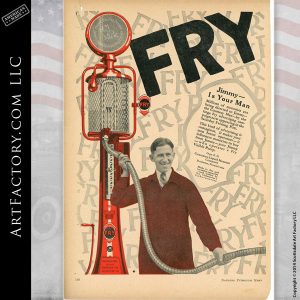
Fry Mae West gas pumps, produced in the 1920s and 1930s, are iconic for their curvy, art deco design reminiscent of actress Mae West. These pumps featured vibrant colors and often included visible glass cylinders, allowing customers to see the fuel being dispensed. As automobile ownership surged, these pumps became popular at gas stations across the U.S. However, their prevalence declined after World War II with the rise of modern designs. Today, Fry Mae West pumps are highly collectible, cherished by vintage enthusiasts for their unique aesthetic and historical significance in American automotive culture.
Fry Mae West gas pumps, known for their unique design and historical significance, represent a fascinating chapter in the evolution of fuel dispensing technology.
Origins
The Fry Mae West gas pump was developed in the early 20th century, around the 1920s. Named after the famous actress Mae West, the pump's design was characterized by its curvy, art deco aesthetic, reminiscent of West's iconic style.
Design Features
These pumps often featured bright colors and ornate details, making them stand out at gas stations. The pumps were typically made of durable materials and included mechanical dials for measuring fuel dispensed. Some models had a visible glass cylinder, allowing customers to see the amount of gasoline being pumped.
Popularity and Use
Mae West pumps became popular in the United States during the 1920s and 1930s, especially as automobile ownership surged. They were a staple at many gas stations, particularly those catering to middle-class drivers and the burgeoning road trip culture.
Decline and Legacy
With the advent of more modern gas pump designs and the increasing demand for efficiency, the Fry Mae West pumps began to decline in popularity after World War II. However, they are now highly collectible items among vintage automotive enthusiasts and serve as a nostalgic reminder of the early days of motoring.
Collectibility
Today, Fry Mae West pumps are sought after by collectors and restorers of vintage gas station memorabilia. Their unique design and historical context make them a prized possession for those interested in automotive history and Americana.
Conclusion
The Fry Mae West gas pump is more than just a piece of machinery; it represents a cultural icon of the early 20th century, reflecting the intersection of technology, design, and the evolving landscape of American transportation.
Fry Visible Gas Pump Original Sales Literature
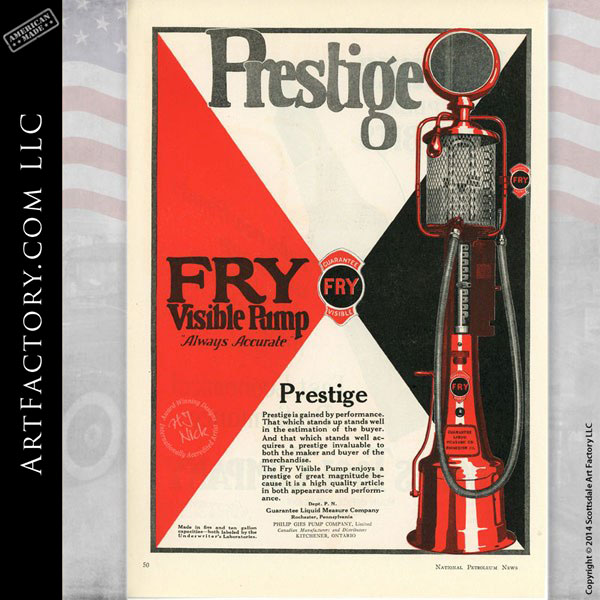
 Vintage Gas Pump Display Carts: Islands With Wheels For Heavy Collectibles - GSI500
Vintage Gas Pump Display Carts: Islands With Wheels For Heavy Collectibles - GSI500
At ArtFactory.com we make vintage gas pump display carts so that you can conveniently move your vintage visible gas pumps and other heavy collectibles from place to place. These custom islands with wheels can be come built to suit you needs. They can be built to hold one gas pump, or you whole collection, and can also be built for lubesters and vending machines. These vintage gas pump display carts are an original design by H.J. Nick, and are hand built in heavy gage steel. The even come complete with electrical wiring so that your pumps can plug right into the island. The are also UL listed.
Finally, a convenient way to display and transport your heavy collectibles. This example includes 25 Foot industrial duty cord with plug wired and 4 duplex electrical outlets. Vintage gas pump display carts can be custom designed to any size, and like all of our products are built custom made to order. They can also be hand finished in any color to match you collectibles or the color scheme of your man cave. The vintage gas pump display carts pictured feature a 1930's-50's era Texaco color theme. They are custom finished to appear as worn and aged concrete colored Texaco red and grease stained in a battleship gray.


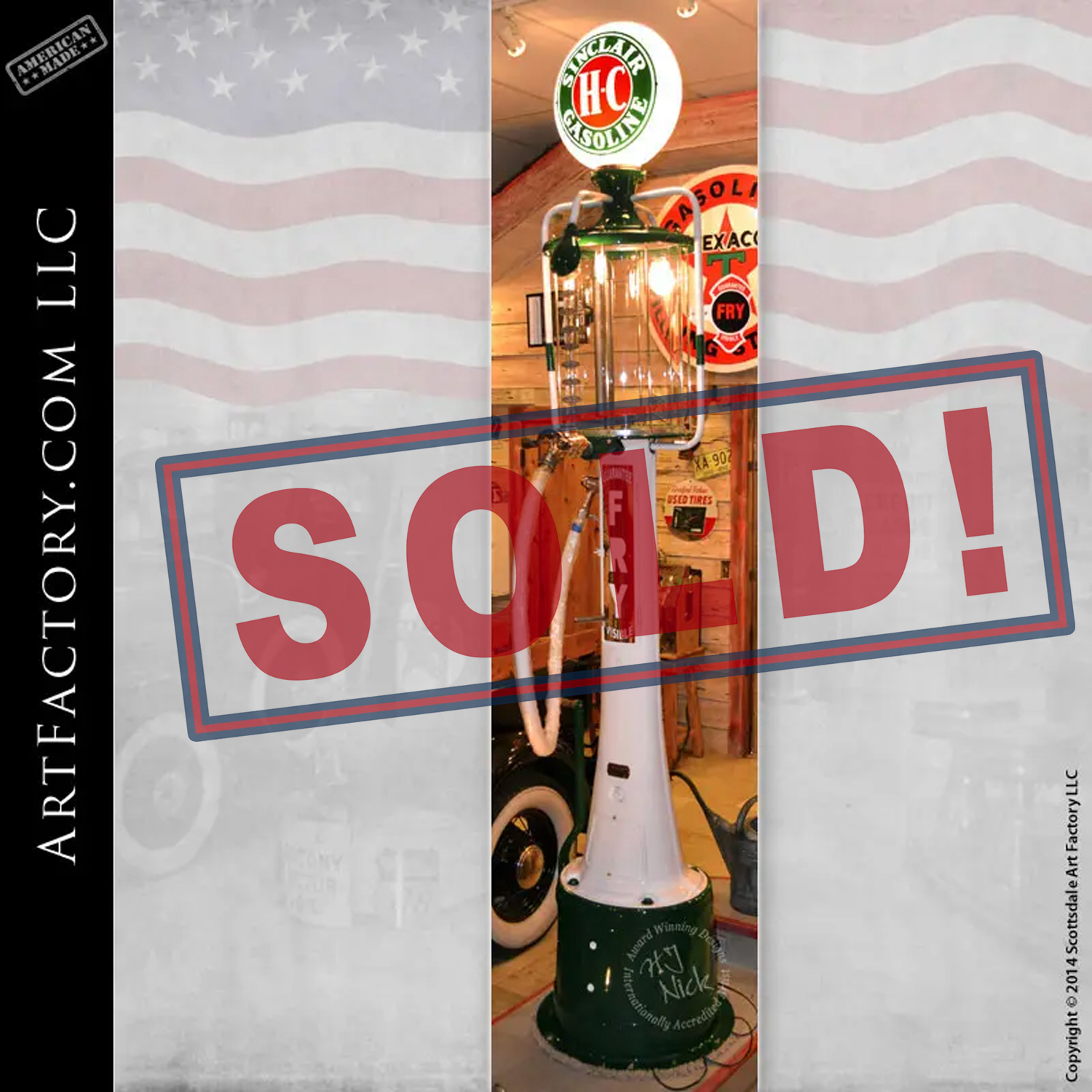
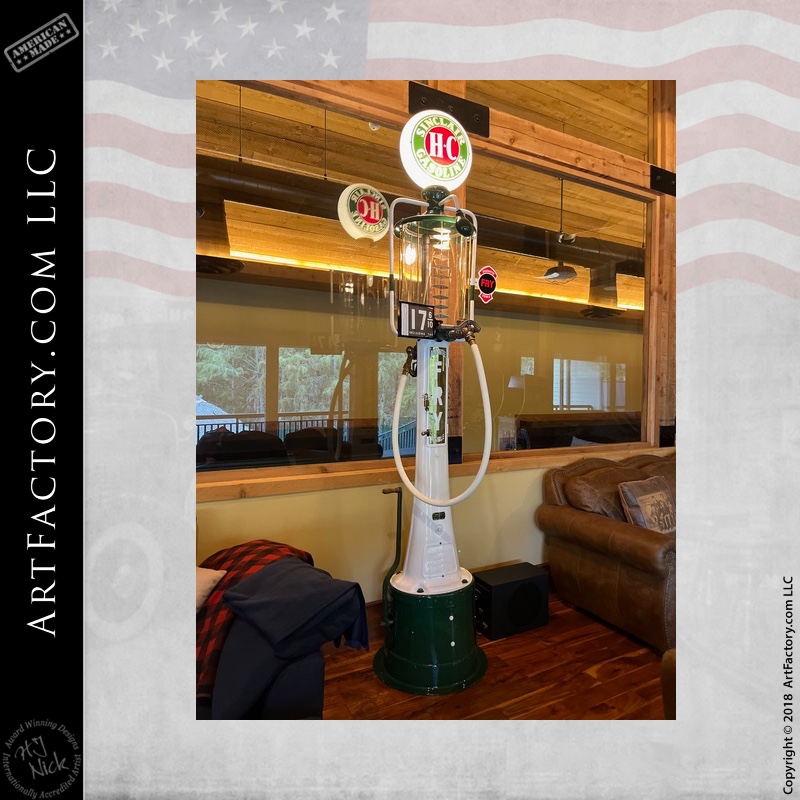
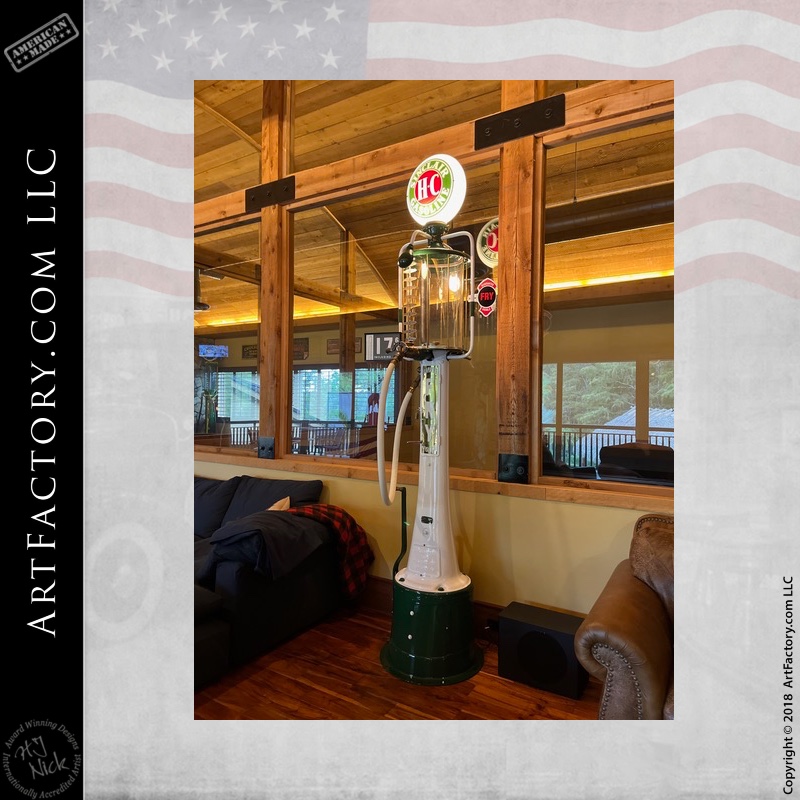

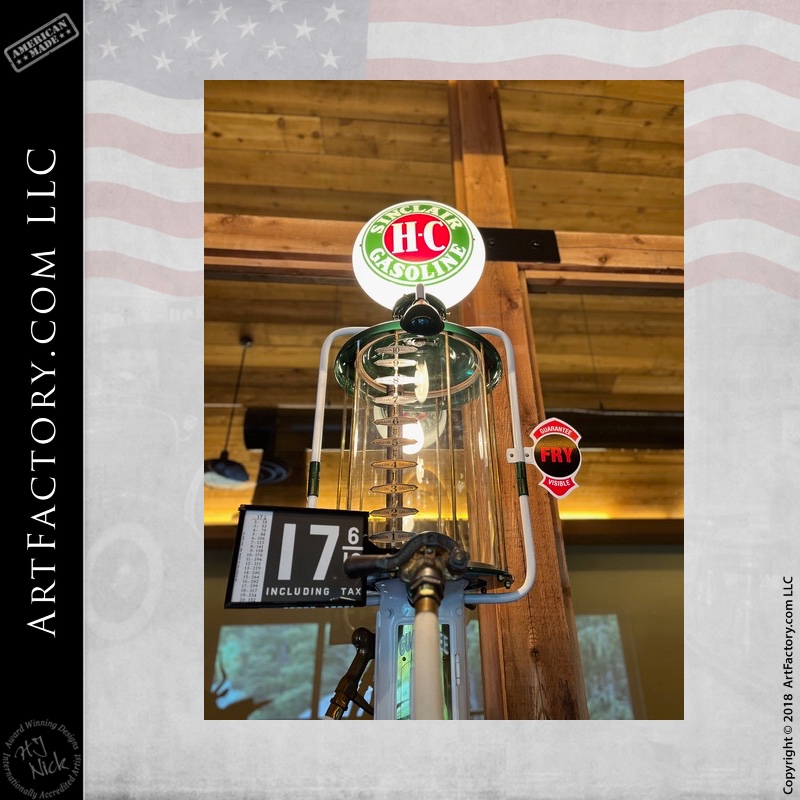

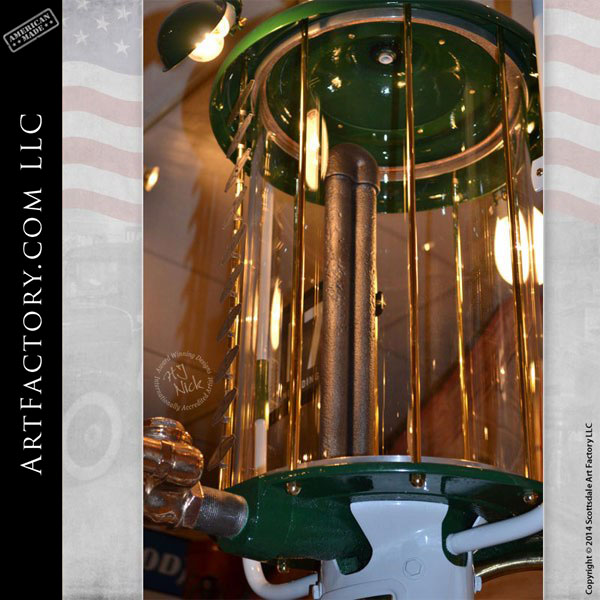
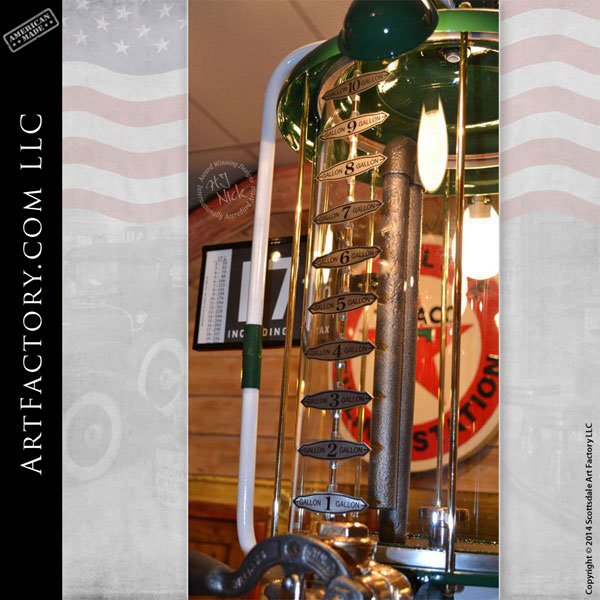
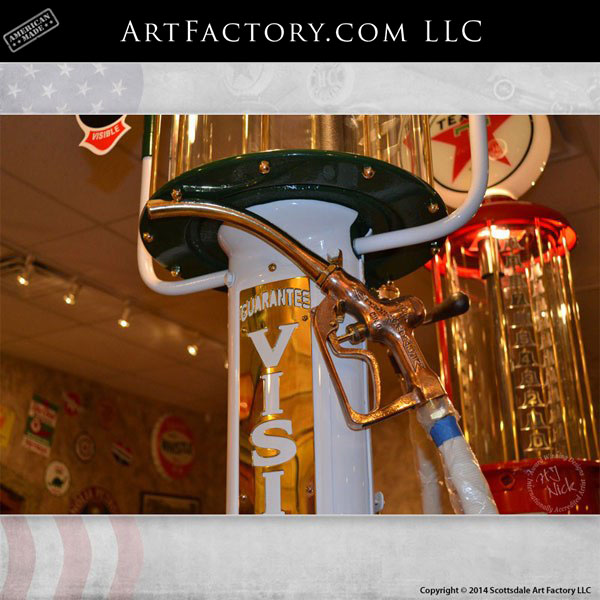
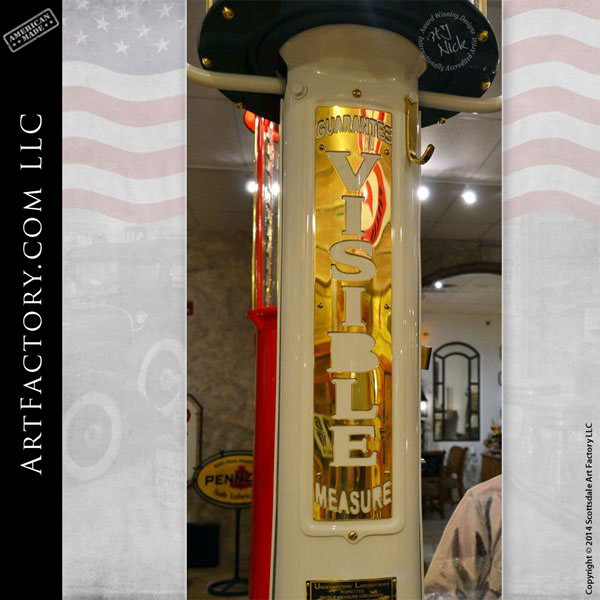
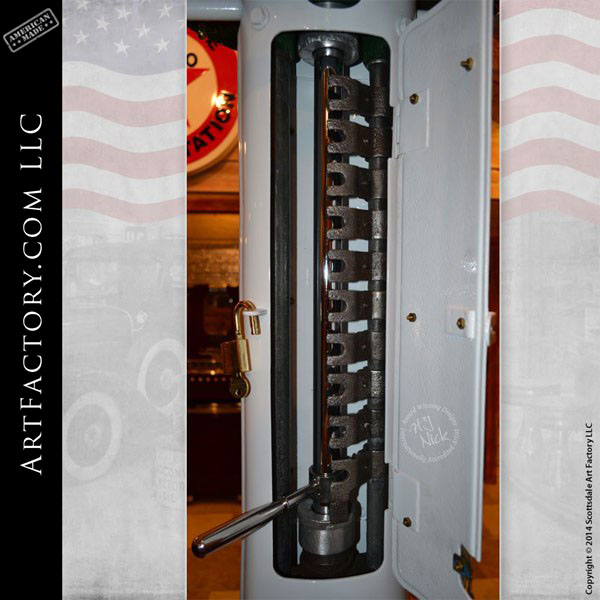
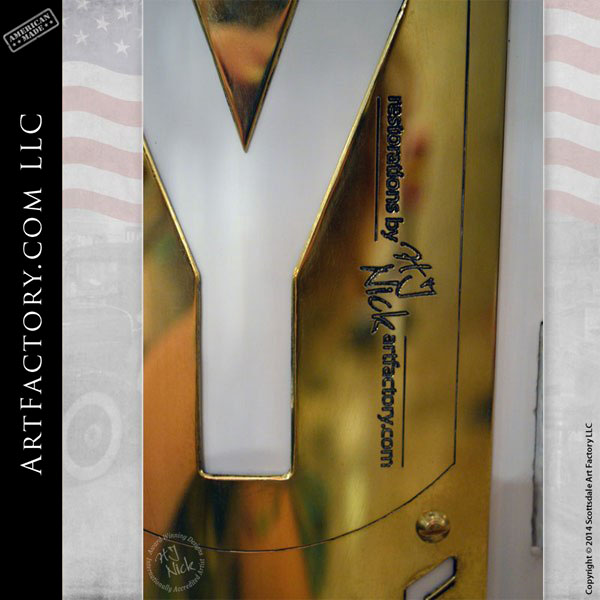
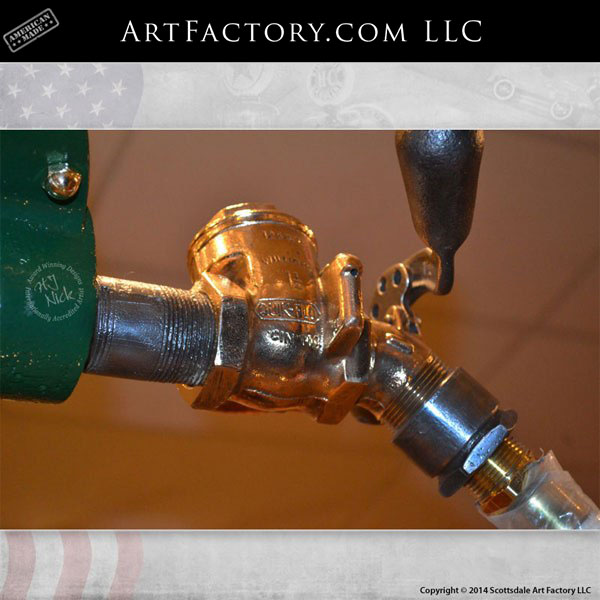
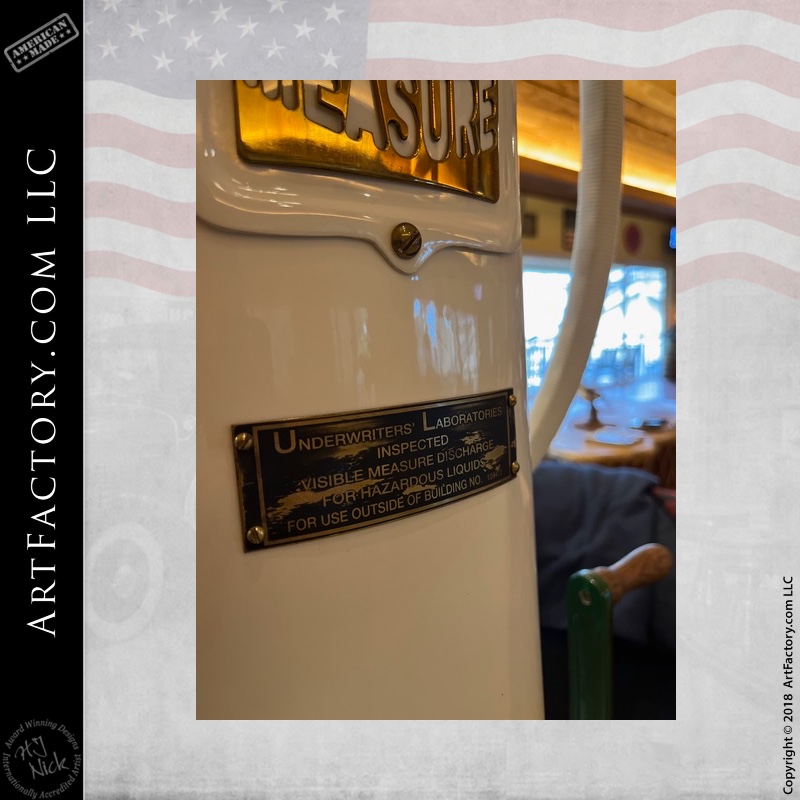
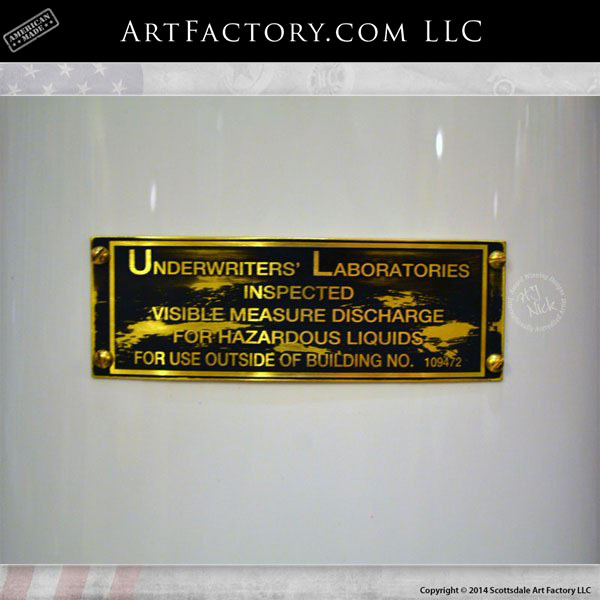


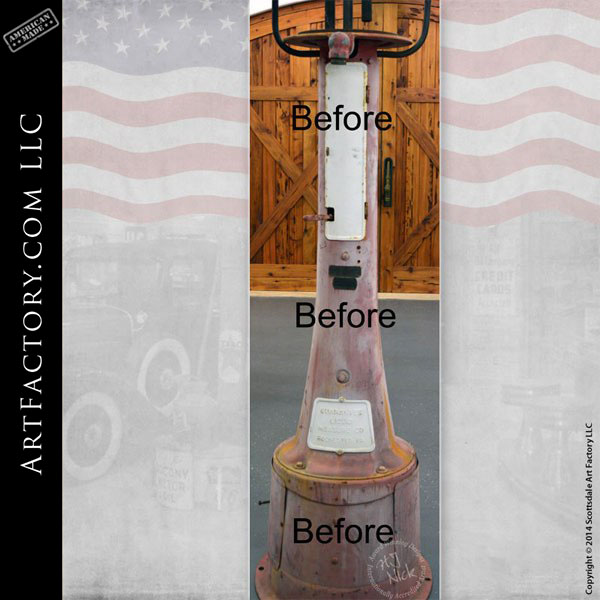
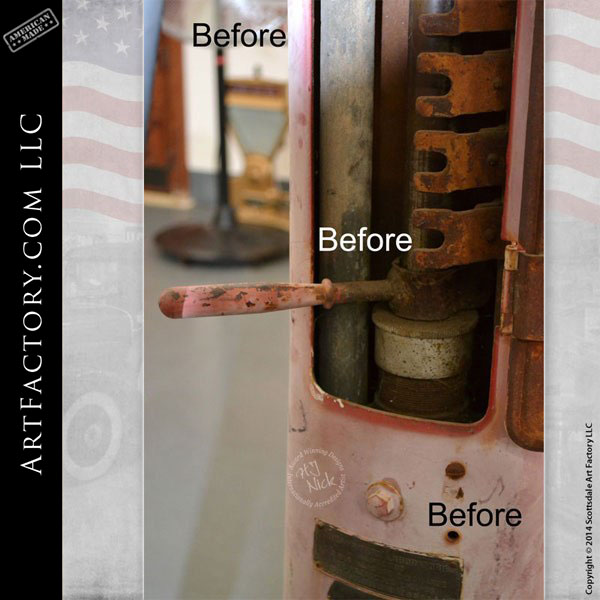

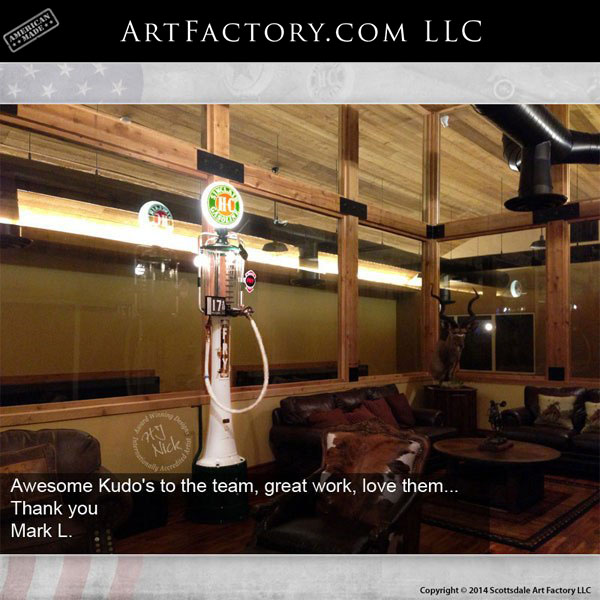
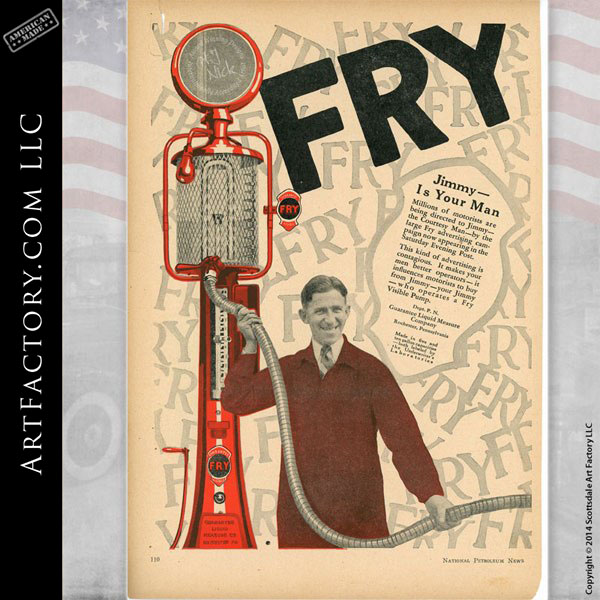


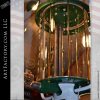
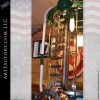
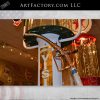
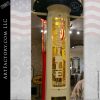
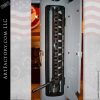
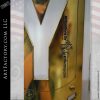
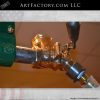

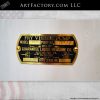
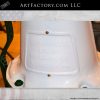
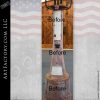
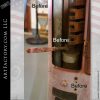
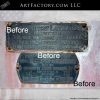

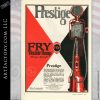
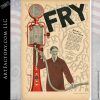

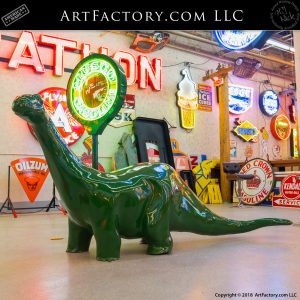

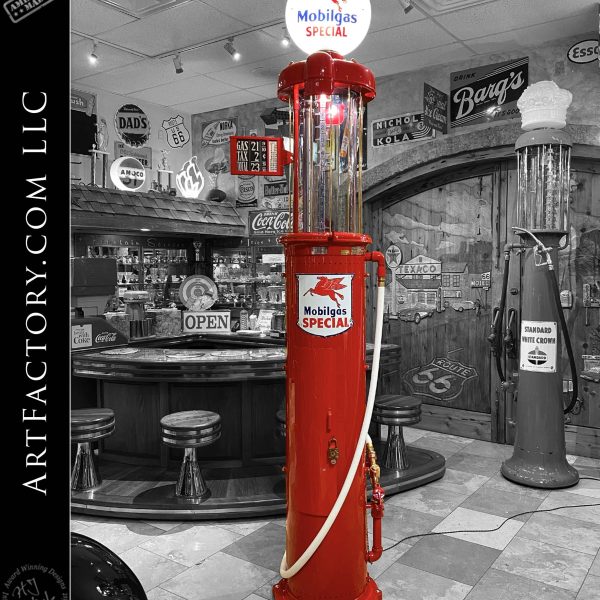
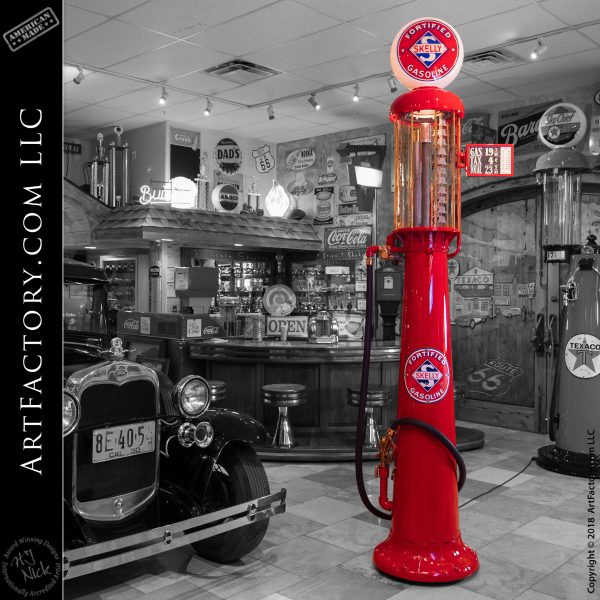

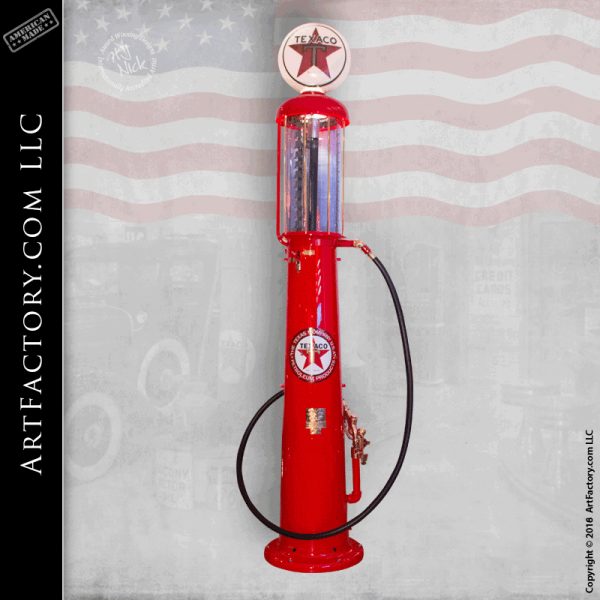
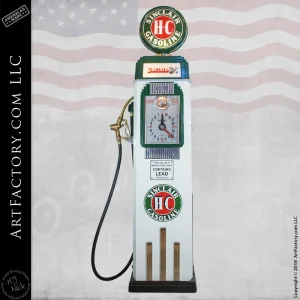
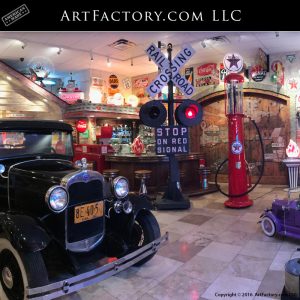

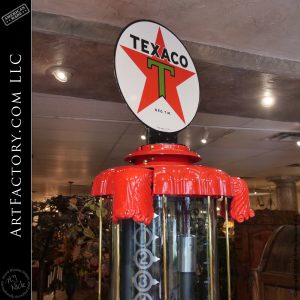
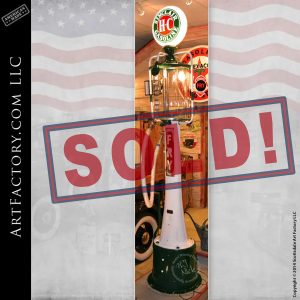

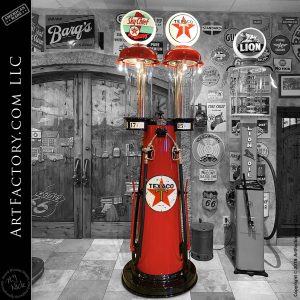
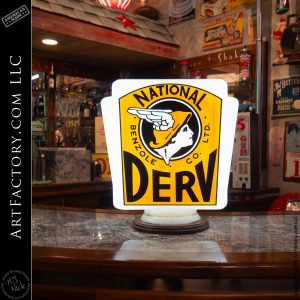
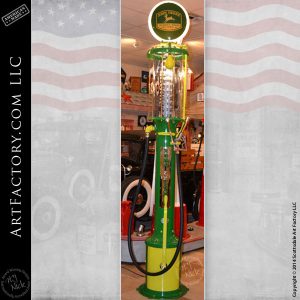
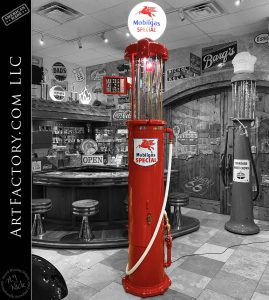
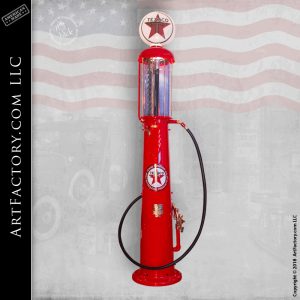
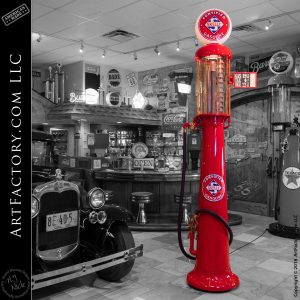
Reviews
There are no reviews yet.